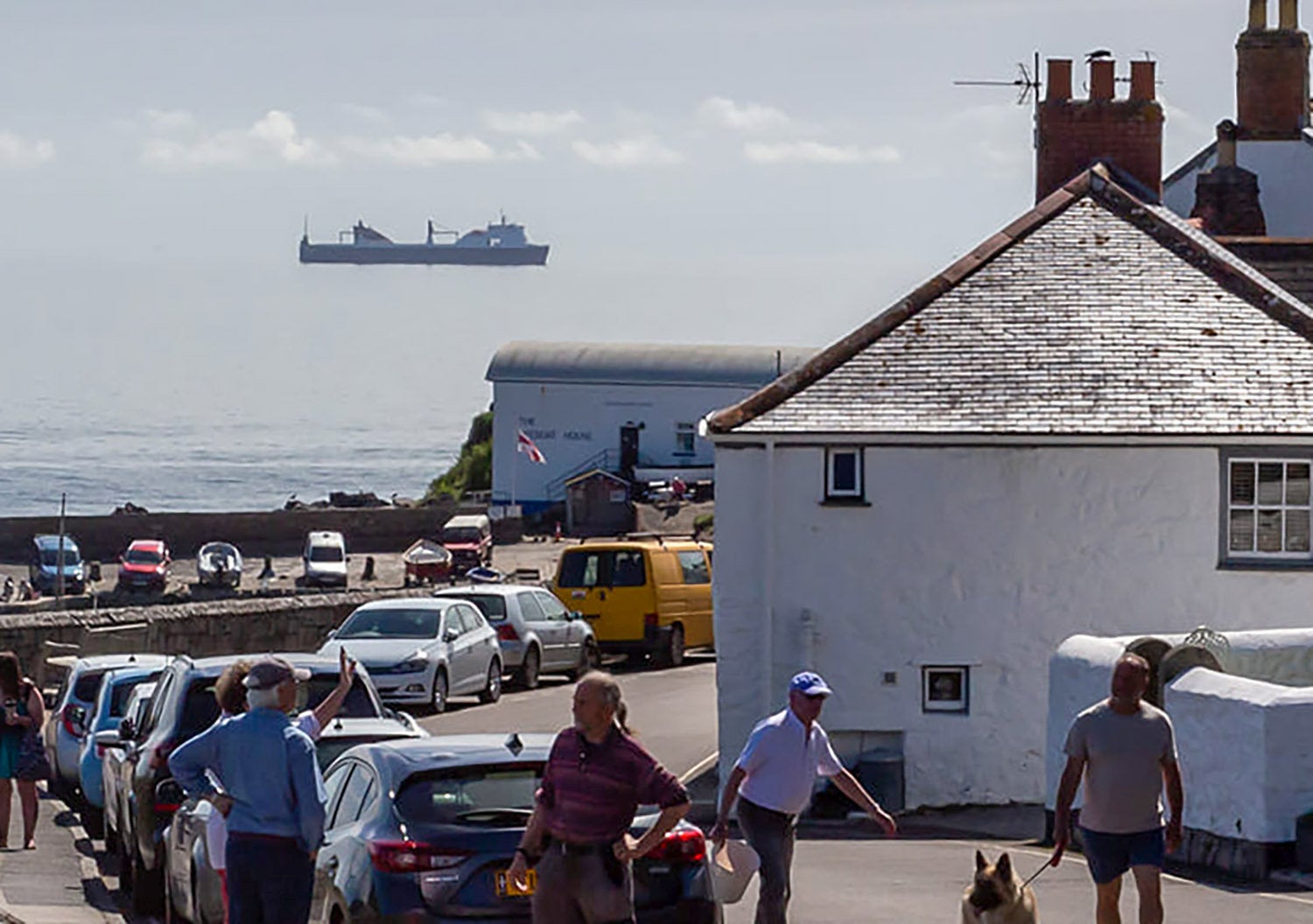UK photographer spots huge ship appearing to fly
Rare mirage is more usually encountered in the Arctic

Visitors to a small coastal village were baffled when a ship appeared to fly, in a rare mirage seen more often in the Arctic than Britain.
Photographer Martin Stroud was in Coverack in Cornwall when he snapped a picture of a large cargo ship that appeared to be flying.
Posting on Facebook, the photographer said: “Almost looks like it’s flying! Beautiful day for a visit to Coverack.”
In the picture, the vessel appears to glide above the line of the horizon.
The photograph amazed people on a local Facebook group where it was described as “an amazing shot”.
Such a phenomenon has been seen before in Cornwall, with different explanations given.
In 2017 Rosie Patterson in Porthleven captured what appeared to be a flying container off the coast of the port.
At the time it was explained as a rare state of conditions, in which the sea in the foreground of the picture was choppy, with waves, while further back out to sea where the ship was anchored the water was calm and mirror-flat.
This created the illusion of the ship apparently sitting in the sky, with the horizon line placed along the top of the choppy water.
However, when a similar image was captured by David Morris at Gillan Cove back in March last year, a different explanation was given.
At that time BBC meteorologist David Braine described it as a “superior mirage”, which was common in the Arctic but happened only very rarely in the UK.
A superior mirage is one in which the image appears to be located above the real object, caused when the air below the line of sight is colder and therefore denser than the air above it.
This is the opposite of what normally happens during the daytime.
It results in the light rays bending downwards as they pass through the so-called temperature inversion.
Subscribe to Independent Premium to bookmark this article
Want to bookmark your favourite articles and stories to read or reference later? Start your Independent Premium subscription today.

Join our commenting forum
Join thought-provoking conversations, follow other Independent readers and see their replies